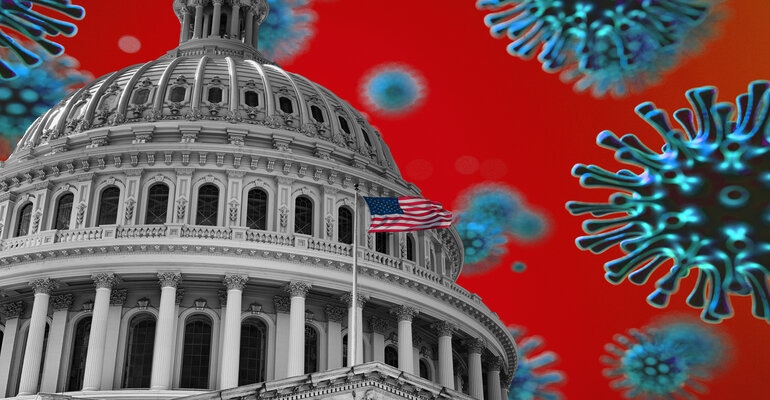However, the declaration might soon be nearing its end, resulting in millions losing Medicaid coverage.

Last week, the Biden Administration announced it would once again extend the COVID-19 public health emergency (PHE) as concerns of virus subvariant Omicron XBB.1.5 spreads in the United States, stoking fears of hospital congestion. The Department of Health and Human Services (HHS) originally declared the emergency in January 2020 under the Trump Administration, and it has since been extended 12 times, every 90 days as the declaration states.
HHS Secretary Xavier Becerra has also publicly committed to giving state governments and healthcare stakeholders a 60-day notice if the service plans to allow the declaration to expire. Notably, the expiration of the PHE will have a vast impact on the US healthcare system.
Over the past three years, the PHE has protected public health insurance coverage for millions of Americans and provided hospitals with greater flexibility to respond to patient surges and expanded telehealth. Once the declaration expires, hospitals will lose flexibility in how they deploy staff, add beds, and care for patients in the case of hospital surges. Additionally, it would also affect the expanded role of pharmacies since the beginning of the pandemic, as they have been a large administrator of COVID-19 vaccines during PHE, but it’s unclear the extent of the impact this will cause.
Earlier in the month, Politico reported that the Biden Administration was considering making the most recent extension its final for PHE. However, an administration official told The Hill that the decision to terminate the declaration is in the hands of the HHS secretary and will be based on the best available data and science.
Regardless, the Centers for Medicare and Medicaid Services (CMS) have encouraged healthcare providers since August 2022 to start preparing for the end of PHE in the hopes of minimizing disruptions.
“CMS has used a combination of emergency authority waivers, regulations, enforcement discretion, and sub-regulatory guidance to ensure access to care and give healthcare providers the flexibilities needed to respond to COVID-19 and help keep people safer,” CMS wrote. “Many of these waivers and broad flexibilities will terminate at the eventual end of the PHE, as they were intended to address the acute and extraordinary circumstances of a rapidly evolving pandemic and not replace existing requirements. …CMS encourages healthcare providers to prepare for the end of these flexibilities as soon as possible and to begin moving forward to reestablishing previous health and safety standards and billing practices.”
One of the major causes of disruption is expected to come in the form of millions losing health insurance coverage under Medicaid in the coming months, as the House of Representatives banned states from releasing people from the program during the PHE. As a consequence of the ruling, Medicaid enrollment surged 30% to more than 83 million. Congress, however, recently severed Medicaid protections under PHE, stating that states could start withdrawing people from the service in April if they no longer meet eligibility requirements.
Happening amid the potential changes is the rise of the omicron XBB.1.5 subvariant which has experts concerned due to its high transmissibility. The subvariant has rapidly become dominant in the US, with scientists putting its prevalence to a growth advantage due to its ability to bind to human cells while also evading immunity. The World Health Organization stated that it is the most transmissible subvariant yet, but presently there is no data suggesting it makes people sicker.
With concern for subvariant spread heightened, companies that supply diagnostic testing for COVID-19, like major player Abbott Laboratories, are making sure access remains available for those experiencing COVID-19 symptoms. Access to testing, Abbott said, will help treatment begin as soon as possible for those positive for the virus, hopefully reducing the need for hospital admission.
“Maintaining our domestic rapid test manufacturing infrastructure is mission critical for pandemic preparedness,” a spokesperson from the company said to MD+DI. “This includes responding quickly to seasonal [COVID-19] waves and new variants and ensuring that rapid tests are readily available so that [COVID-19] therapeutic treatments can be administered quickly. Testing for [COVID-19] — and future pandemic threats — will continue to be a national enabler for public health, our economy, and our way of life.”
Diagnostic company, Cue Health also highlighted its molecular test that can detect emerging variants, including omicron XBB.1.5.
"Our molecular test can detect emerging COVID-19 variants with a very high degree of accuracy, including XBB.1.5,” said Andy Hudak, vice president of research and development, and program management at Cue Health, in a statement to MD+DI. “The high sensitivity of Cue’s testing platform can quickly identify [COVID-19] positive individuals and allow for delivery of antivirals, allowing for treatment to be administered when it is most effective.”
About the Author(s)
You May Also Like




